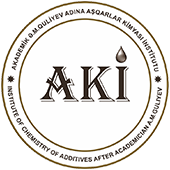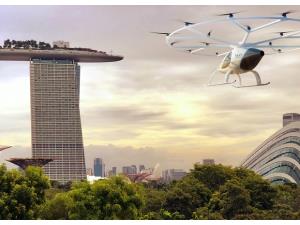Volocopter today spelled out how it plans to exploit the global market for urban air mobility (UAM) that it expects to be worth €241 billion ($284 billion) by 2035. In a 2.0 white paper entitled The Roadmap to Scalable Urban Air Mobility, the German eVTOL aircraft developer explains the steps it will take to launch commercial operations in the next two or three years.
More than half of the projected market potential for 2035 will be in passenger services, valued at €141 billion, according to Volocopter, which has updated the estimates it gave in its June 2019 1.0 white paper, Pioneering the Urban Air Taxi Revolution. The company expects the remaining €100 billion portion of the market value to be generated by cargo and other logistics operations that it intends to address with its VoloDrone vehicle.
Volocopter produced the earlier manifesto mainly as a competitive response to the October 2016 Uber Elevate white paper Fast-forwarding to a Future of On-demand Urban Air Transportation, which had been hailed as a defining statement of intent for the nascent industry. In December 2020, Uber sold its Elevate platform to Volocopter rival Joby Aviation, backing away from its leading role in the UAM sector.
The new white paper outlines what Volocopter considers to be the main elements of the so-called ecosystem to support the envisaged rapid scaling up of UAM services. The company maintains that early-stage services will be able to get underway using existing ground and air traffic management infrastructure, but it now seeks to explain the “interfaces and interdependencies” that will need to be established in the longer term to grow services. These include regulators, customers, cities, operators, air navigation service providers, staff, digital operations platforms, and maintenance services.
The company is working with UK-based Skyports to identify and secure locations for its VoloPort vertiport facilities. At the same time, it is focusing on plans to provide “first and last mile” ground connections for passengers and has already established a partnership with ride-hailing app Grab, which provides connections to services in 339 cities across Southeast Asia.
This is just one of an estimated 150 partnerships that Volocopter has established worldwide as part of plans to develop the UAM ecosystem. Some of these partners are in projected early-adopter cities like Singapore and Paris and include organizations such as Aeroports de Paris, the Choose Paris Region agency, the Economic Development Board of Singapore, and the Civil Aviation Authority of Singapore. Air taxi services are expected to be available by the end of 2023 in Singapore and in 2024 in the French capital.
In Europe, Volocopter’s partners also include Fraport, which runs Germany’s Frankfurt Aiport, and Lufthansa Industry Solutions. The latter company is helping to build the VoloIQ digital platform that will harness artificial intelligence to connect the complex operational web of services and support functions. In Asia, early partners also include Japan Airlines.
According to Volocopter, most of the early demand for UAM services can be met by the initial 35-km (22-mile) range of its VoloCity aircraft, which will have a pilot on board and just a single passenger seat. The white paper maintains that the core urban areas of major cities such as New York, Paris, London, Tokyo, Shanghai, Beijing, Sao Paulo, and India’s Mumbai span less than 30 km and that its vehicle will prove competitive with car services operating above gridlocked streets at speeds of around 90 km/h (56 mph). As battery technology improves, the VoloCity’s range is expected to increase to 65 km (40 miles).
Speaking during a March 23 webinar organized by IPO Edge magazine, Volocopter CFO Rene Griemens confirmed that his company is working on a larger eVTOL aircraft that would seat up to four passengers. Patents filed for this design show a pair of wings that would support significantly longer but as yet unspecified range for the lift-and-cruise model compared with the VoloCity multicopter.
The new white paper also addresses what Volocopter sees as an evolutionary process towards the ultimate goal of achieving fully autonomous eVTOL aircraft operations. It spells out the steps being taken without committing to a specified timeline for eliminating the need to have a pilot on board, a move that is expected to deliver significant cost savings.
Like several other eVTOL aircraft developers, Volocopter intends to operate commercial services itself. The company says that it is in the process of applying for the required air operator certificate from EASA. It is also working with unnamed approved training organizations to support efforts to recruit and train the required pilots and maintenance personnel.
The European Union Aviation Safety Agency (EASA) is the primary focus of Volocopter’s efforts to complete type certification for the VoloCity aircraft. It recently applied for concurrent U.S. validation by the FAA and also expects to get this from the Singapore authorities within three to six months of the initial approval from EASA under the new Special Condition VTOL rules (derived from the existing CS-23/Part 23 regulations).
“While the vehicle plays a central role as outlined in the Volocopter white paper 1.0, the attractiveness and scale of the UAM market will rely on executing an ecosystem approach that unlocks operations at scale,” concludes the new white paper. “The goal is to develop an entire industry with a comprehensive set of services, and this complex task will not be feasible without building strong alliances. Based on these convictions, Volocopter is developing a platform solution that covers the entire UAM ecosystem in partnership with well-respected companies and institutions.”


